|
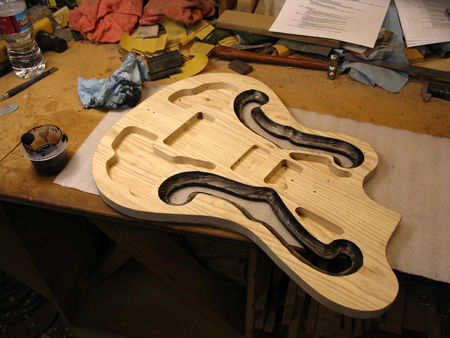
It's much easier to paint the inside of the F-hole cavities before the top and back are glued together. I start by brushing in black KTM-9, which sinks down deep into the grain of the ash. After it's dry, I gently scrape the surface of the cavities, leaving only the black in the grain.
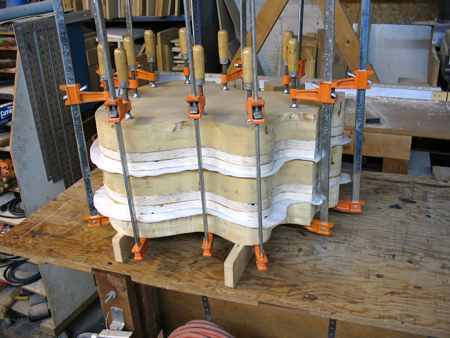
Here are the tops and backs of two bodies being glued together in a stack fixture. Small plastic dowels in the internal reference holes keep them accurately aligned. I use Smith's Oak & Teak Epoxy here. The stack fixture is made up of heavy platens laminated from MDF. It's important to keep the bodies flat during gluing. The thin white plastic sheet under each body keeps the epoxy squeeze-out from dripping down onto the fixture.
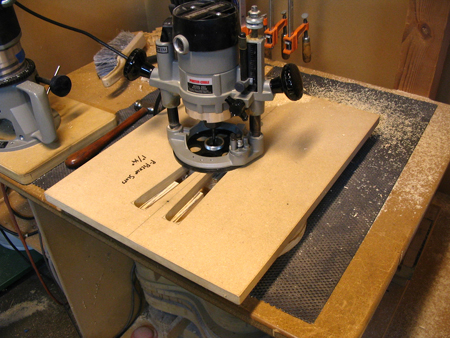
This template is used to rout the slots for the P-pickup frame.
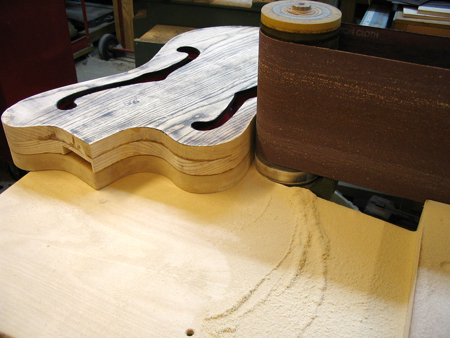
The perimeter of the body is roughly smoothed on my Grizzly edge sander. Notice how I've modified the machine to mount a bearing wheel down below the belt on the end frame. The diameter of the bearing wheel matches the diameter of the belt over the roller, so it can follow a pattern. The body is face down, plugged onto an MDF pattern, which rolls along on the bearing wheel. This is a good technique for quickly bringing the perimeter down to size and shape.
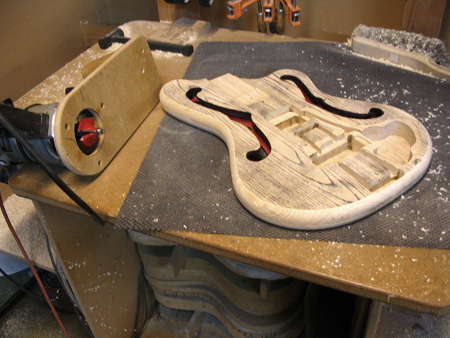
A router with a radius bit is used to rough cut the rounded edge around the perimeter of the body. The shape is cut is several small steps to minimize cross-grain tearout of the ash.
|
|
|
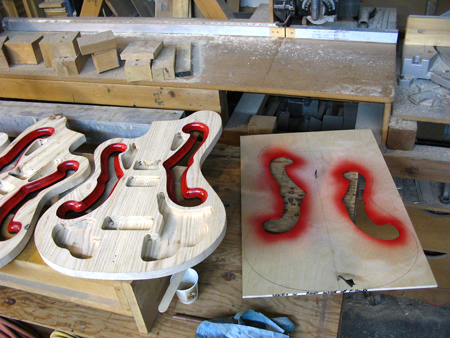
I spray the F-hole cavities with two coats of KTM-9 to match the final instrument color scheme, in this case transparent red. The plywood mask plate plugs into the reference holes, like everything else.
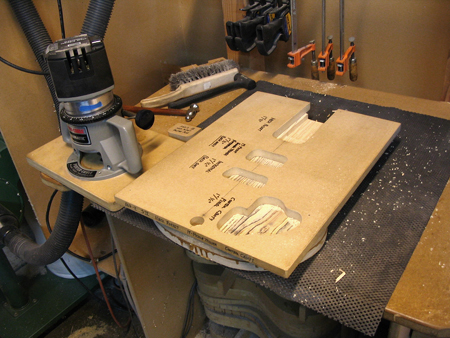
Next comes the routing of all of the cavities on the front of the body. This includes the neck pocket, control cavity, pickup cavities, control plate recesses, etc. This is all done with routing templates.
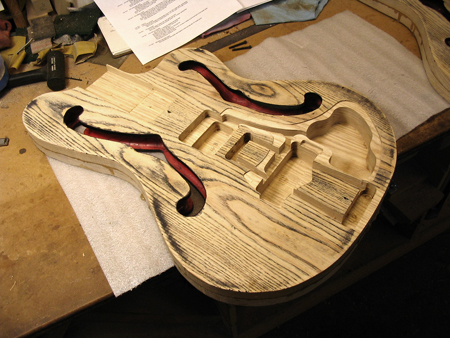
Here is the body with all of the exernal cavities routed.
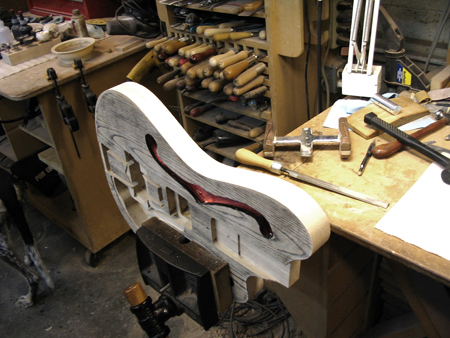
After the rough machine sanding, the perimeter of the body is hand smoothed with files and checked to make sure the curves fair neatly into each other, and that there are no lumps.
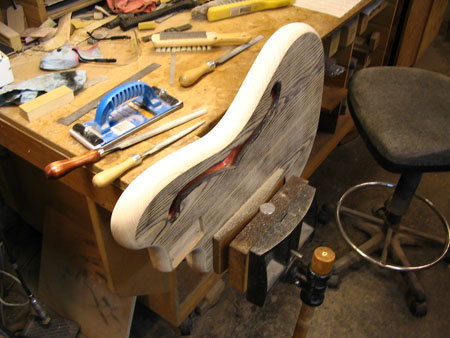
The perimeter of the body is smoothed and blended with files and a rubber backed sanding block.
|
Next Page..
|

